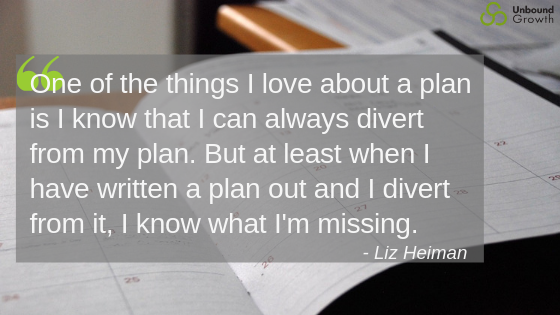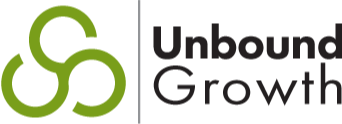
The selling never stops.
Just because you have won the first opportunity doesn't mean your job is done. If you are truly looking to solve problems, you should be actively working with key accounts to find more ways to help.
Learn more on this #livesaleslab recap.
Liz Heiman: Key accounts are those large accounts that you already have that are currently buying from you. Maybe they make up a large percentage of your current revenue or maybe they could make up a large percentage of your revenue, but don't yet. So they're either key accounts that are spending a lot of money with you or could be spending a lot of money with you.
Carole Mahoney: And like you had said earlier, this for small companies, this could mean millions.
Liz Heiman: Oh my gosh. So here's the thing, is we as a particularly in SAAS but in other industries as well, we're really focused on new logos, new logos, new logos, but what we forget is, there literally could be millions of dollars... Millions of dollars sitting on the table with accounts that you already have and the part that's crazy is the easiest sales you'll ever make is with customers you already have, right? Or with referrals from customers you already have.
Carole Mahoney: So like Manna from heaven, easy money, sitting on the table right there in front of you and you're like, you're looking past it to go running after something that's chasing down the hall 'cause it still costs more, even in this day and age, it still costs more to get a new customer than it does to keep a new one or grow a new one.
Liz Heiman: And I don't know what he numbers are now, but for a long time the numbers were for every dollar you spend growing an existing account, it would cost you 10 dollars to get a new account.
Carole Mahoney: Yeah. I'm gonna take that as my to do from this is I'm gonna go ... 'cause you know me, I'm a numbers nerd. That would be interesting to find out. So there's a lot of money involved here. It's right there in front of you on the table, so what are some of the key things that we need to do to go after that. I think you had mentioned three to four things that we need to do.
Liz Heiman: So I like to break it into phases. So phase one is do an assessment. What is the current situation? Phase two is create a plan and then phase three is to execute it and then revisit it and make sure you're continuing.
So let's go to phase one, which is my favorite part, I'm so weird. So phase one is where you do the assessment. You say what do we have going on here? So, I like to start with, who do I know in this account? Just start by listing all of the people that I know and all of the people in my team interacts with people on that team and who do they know? And chart that all out. Make a chart. Who knows who. What kind of power do they have. How do they feel about us? Do they like our solution? Do they not like our solution. Because it might be before you can even go some more, you gotta fix what you've already got.
Carole Mahoney: So Liz, if I didn't know any better, I would swear you're kinda talking about a whole lot of account based revenue kind of strategy thing.
Liz Heiman: It is. It is. You know, this is the second half of the account based revenue. The first half is when you start an approach but yeah, so you go in and you say, so let's figure out who all we know.
The second thing is what I call a white space analysis. So we figure out what have we sold to them. Which divisions. Which departments. Which products. So I lay it out in a spreadsheet, right? Here's all the products we have. Here's all their departments. Who's bought what? And then you have a pretty good idea of where you stand. So that's your assessment. Simple and there are actually tools that do white space assessments now. You don't have to do 'em by hand anymore.
Carole Mahoney: Doing it by hand is fun. It's kinda like coloring. I still have a big white board in my office with like a 16 pack of the markers so yeah, I'm with you there.
Liz Heiman: And a spreadsheet that I can make all different colors.You know, some of us ... Anyway, so that's your ... that's the assessment. Really simple. Now we know what's going on and now you need to create the plan. Right?
Carole Mahoney: Sounds so much fun for so many people. This is the exciting part. No, I was being sarcastic. Most people hate this part. They do they hate the plan part because they think about it it's like it's gonna take time, and you know, how do we know that this is the right approach and sometimes we get into this perfectionistic need to know every little detail before we take action, so what's the balance between that and knowing enough to take action?
Liz Heiman: Well, one of the things I love about a plan is I know that I can always divert from my plan. But at least when I have written a plan out and I divert from it, I know what I'm missing.
Now, if you don't write it down and we just go, "Oh I think this is the better idea. I'm gonna go or this," you haven't written down and gone, "Oh I could go for that or I could go for the six million that's sitting here that, oops I forgot all about."
So by writing it down, by seeing the big picture, you can start to make decisions, you can do whatever you want, but at least you've seen it. You've seen what the possibility is and if you have a team, your whole team knows what the possibility is.
So now you can have a conversation about, "All right. We are not positioned well with this person and we need to be because they can introduce us to all of these other people. But lowly me in customer success, I can't get to that person, so maybe the CEO should call them."
So we can create a plan that helps us identify what needs to be done and who needs to be doing it. So, again I like to start with, what relationships are out there. Who do we need to know? 'Cause we've already identified white space. Right? So, if I wanna sell in this place over here, who are my contacts to get me there and who in my organization can help me?
The other thing is we've done a white space analysis or we've looked at what potential opportunities there are, but they're not all real or good opportunities. So we now need to go find out. We need to list the opportunities that we think are real and go to those people with those questions.
Carole Mahoney: Oh we actually have to execute on the plan, you mean.
Liz Heiman: Yeah, at some point! So at first I need to make the list of questions that I need to ask. Right? So I lay this out. I figure out which opportunities I think are valid. I figure out what kind of revenue goals I could have. I figure out what kinds of other departments or divisions or sister companies I could be working with and lay it all out. Make my questions. Make a plan.
If I could get everything that is reasonable out of this account, what's it worth? How do I do it? Create an action plan, that's right. And then actually go out and do it. So, who do I know? Who do I have a good relationship with and I pick up the phone, "Hello. Suzie!" Hey, right?
And ask, you know? "I was noticing that you guys aren't using such and such. Who in your company would be making that decision? Would you mind making an introduction, so I can call over and chat with them because I really think this would be of value to that."
Carole Mahoney: Yeah. Or even I like the questions of you know, "How are you handling this now?" And you know, and I think the thing that's important too is to remember that in the assessment of all of this and the planning of all of this, it's gonna, and this is my favorite part, so this is my bias showing, is in the execution of it, like you had talked about, what are the questions that we ask in the plan? And then how do we execute those questions? 'Cause we always think of how we're gonna ask the question, but then when we actually get in the hot seat, then that doesn't actually come out of our mouths.
So, all of this is key and important and so I'm so glad that we did the sales lab today and I would encourage people to comment and see what questions is it that you're asking in that execution process. How are you assessing which companies and planning that out and you know, Liz, you talked about the white space ... white board sort of analysis. How are people doing that? So we can continue the conversation online.
Thanks so much for joining us, Liz!
We want to hear from you!
What questions are you asking in that execution process? How are you assessing which companies are a good fit? Are you using a type of planning analysis? Comment below to keep the conversation going.







